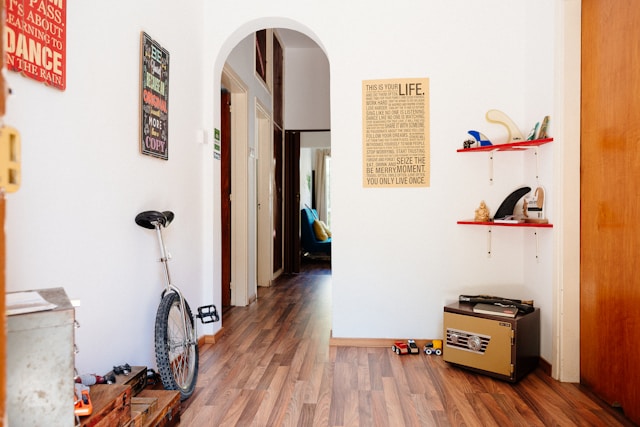Baseboards may seem like a small detail, but they can make a big difference in the overall look of your home. Whether you’re updating an older property or just looking for a simple refresh, learning how to replace old baseboards is an easy and affordable way to elevate your interior space.
This guide will walk you through the entire process from removing outdated trim to installing and finishing new baseboards all with beginner-friendly instructions and minimal tools. If you’re considering a DIY baseboard replacement, you’re in the right place.
Why Replace Old Baseboards?
There are several reasons homeowners choose to replace old baseboards:
-
Style Update: Older baseboards may look dated or out of place after painting or remodeling.
-
Damage: Over time, baseboards can become chipped, cracked, or warped from moisture, pets, or furniture damage.
-
Improved Finish: Installing new trim can give a room a polished, clean look, especially when paired with freshly painted walls or new flooring.
Fortunately, this is one of the easier home upgrades to tackle yourself and you don’t need to be a professional carpenter to do it right.
Tools and Materials You’ll Need
Before you begin your DIY baseboard replacement, gather the following tools and materials:
Essential Tools:
-
Pry bar or trim puller
-
Utility knife
-
Measuring tape
-
Miter saw or miter box
-
Hammer or brad nailer
-
Caulk gun
-
Level
-
Safety glasses
Materials:
-
New baseboards (MDF, wood, or PVC)
-
Finish nails or construction adhesive
-
Wood filler or spackle
-
Paint or stain
-
Caulk (paintable)
Having everything ready will make the process faster and prevent mid-project trips to the hardware store.
Step 1: How to Remove Baseboards Without Damaging Walls
Removing the old baseboards is the first step and with a little care, it’s straightforward.
Instructions:
-
Score the Caulk Line:
Use a utility knife to cut through the paint or caulk where the baseboard meets the wall. This helps prevent drywall damage during removal. -
Pry Carefully:
Insert a pry bar or trim puller behind the baseboard. Use gentle, steady pressure to loosen the board. Work from one end and move down the wall slowly. -
Remove Nails or Adhesive:
Use pliers to pull out any remaining nails from the wall or baseboard. Scrape off old adhesive if used. You want a clean surface for installing your new trim. -
Clean the Wall:
Lightly sand or wipe down the area to remove dust or paint buildup that could interfere with installation.
This step is where patience pays off. The cleaner your removal, the easier your installation will be.
Step 2: Measure and Cut New Baseboards
Precision is key when cutting new baseboards. Don’t rush this part—it’s where the project can go from amateur to pro-level.
Baseboard Installation Tips:
-
Measure Twice:
Measure each wall segment and write it down. Account for inside and outside corners. -
Use a Miter Saw or Miter Box:
For inside corners, cut ends at a 45-degree angle facing in. For outside corners, cut ends at a 45-degree angle facing out. This allows for tight-fitting joints. -
Dry-Fit Before Nailing:
Temporarily place each baseboard section along the wall to check the fit. This gives you the chance to make adjustments before securing them.
This step is the backbone of your project. Take your time, and don’t be afraid to re-cut a board if necessary.
Step 3: Install the New Baseboards
Now that your baseboards are measured and cut, it’s time to attach them.
How to Install Baseboards:
-
Position and Level:
Line up the baseboard against the wall and check that it’s level. Slight floor variations can affect fit. -
Nail or Glue:
Use a brad nailer or hammer to secure the baseboard to the wall studs. For small rooms or where nailing is difficult, a construction adhesive may work, but nails are more secure. -
Check Joints:
Make sure your corners align tightly. You can use clamps or painter’s tape to hold joints together while you work. -
Address Gaps:
Slight gaps between the wall and baseboard can be filled with caulk later don’t worry if it’s not perfectly flush yet.
This is where your room starts to transform. With every section installed, the finish line gets closer.
Step 4: Finish Like a Pro
The final touches make all the difference in achieving that clean, professional look.
Steps to Finish the Job:
-
Fill Nail Holes and Gaps:
Use wood filler or spackle to cover nail holes. Let it dry, then sand smooth. -
Caulk the Top Edge:
Apply a bead of paintable caulk where the baseboard meets the wall. Smooth it with a damp finger or caulking tool. -
Paint or Stain:
If you’re painting, use a semi-gloss or satin finish for durability. Use painter’s tape to protect floors and walls for clean lines. -
Clean Up:
Remove any dust or leftover debris. Stand back and admire your work!
With these finishing steps complete, your easy baseboard upgrade is done and your room will look noticeably fresher and more polished.
Common DIY Mistakes to Avoid
Even a relatively simple project like this can go wrong without attention to detail. Here are a few common mistakes and how to avoid them:
-
Measuring incorrectly: Always double-check lengths and angles before cutting.
-
Skipping dry fitting: This can lead to poorly aligned joints.
-
Forgetting to caulk: It hides gaps and gives a seamless finish.
-
Using dull blades or poor-quality tools: This affects accuracy and safety.
-
Rushing the finish: Take your time with sanding, caulking, and painting.
Being mindful of these mistakes can save you time and frustration and ensure your results look professional.
Conclusion: A Simple Project with Big Impact
Replacing baseboards might seem like a small change, but it makes a huge difference in any room. Whether you’re updating a single wall or renovating your entire home, this easy baseboard upgrade is a great way to refresh your space without spending a fortune.

